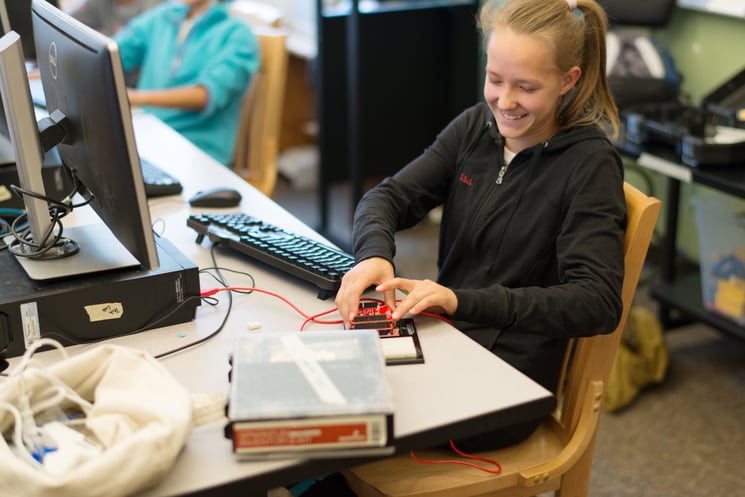Since the mid-1980s, the percentage of computer science degrees awarded to women has dropped from a high of 37 percent to a low of 18 percent. In order to ensure a diverse workforce, this trend must be reversed.
Studies have found that most students decide whether or not to pursue a degree in computer science or a STEM field before they leave high school, with many students making the decision by middle school. These findings emphasize the need for quality STEM education starting in elementary school.

Here are four ways educators (and parents) can encourage young women to pursue degrees and careers in STEM and computer science.
1. Create an Environment of Encouragement
Girls are half as likely to receive encouragement as boys are when it comes to STEM education and skills. Creating an environment that encourages students to test ideas and follow their passions allows girls to feel STEM is for them and not just for boys.
2. Encourage Participation in STEM-Related Extracurricular Activities
Extracurricular activities are a great way for girls to try out STEM applications in a low-pressure environment. In the classroom, many students feel pressured to succeed due to the ever-present threat (whether real or not) of receiving a failing grade. However, with extracurricular activities, this pressure is removed, allowing girls to explore without fear of failure. Additionally, extracurricular activities place STEM in a social context that allows for peer encouragement.
3. Explore Different Career Options
Many students struggle to envision what a career in STEM or computer science would look like simply because they do not know anyone who works in those fields. Taking time to explore different STEM career options with students allows them to visualize what their future could look like. If you bring in guest speakers from different fields, keep in mind that it helps if students can see themselves in the speaker. Aim for a diverse lineup of speakers.
4. Add STEM and Computer Science to Any Class
Instead of relegating STEM and computer science topics to specialized classes, encourage students to explore them in any class. When assigning projects, leave room for students to be creative with the final delivery, encourage them to add moving parts or lights to their projects, create a program that tells a story, or design and 3D print replicas of old maps or tools. A simple search online will turn up any number of fun project ideas that allow STEM and computer science to be added to any class.
What are your best tips for encouraging girls to pursue computer science and STEM-related degrees? Please share in the comments below!


helpful information, computer science, STEM